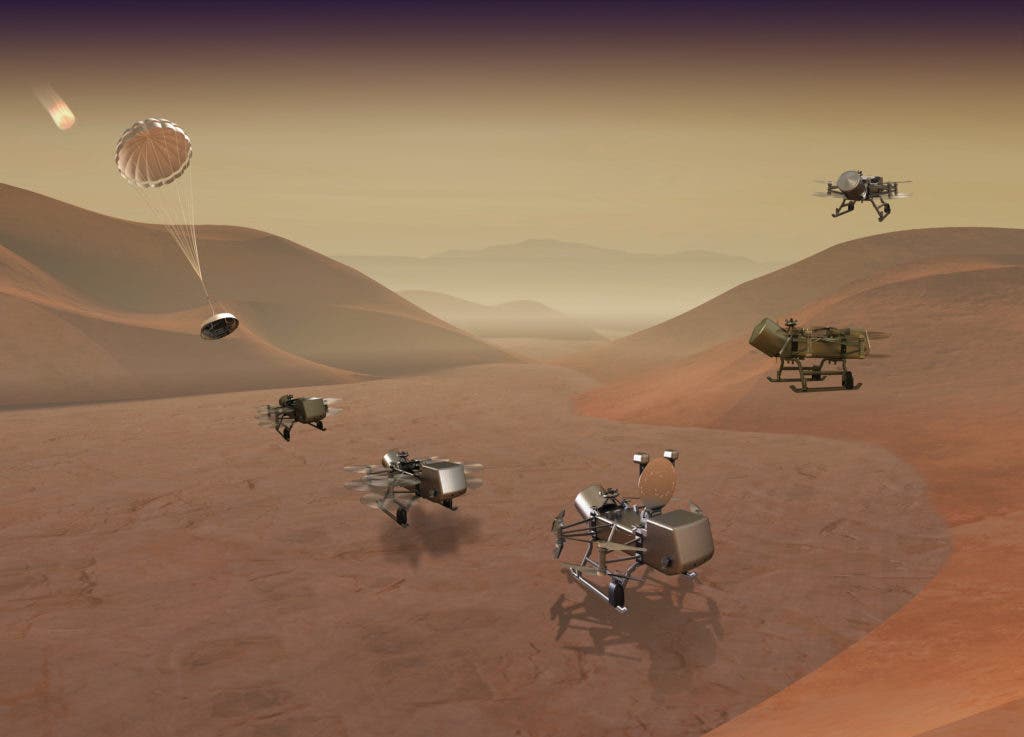This Thursday, NASA announced a new mission to Saturn’s largest moon, Titan.

NASA’s next mission will take it to Titan. The Agency plans to send a drone helicopter the moon to search for the building blocks of life. Christened ‘Dragonfly‘, the mission will launch in 2026 and land Titan-side in 2034. The copter will then fly to dozens of locations across the moon on the back of Titan’s relatively thick atmosphere. Titan is of interest because it is the only body in our solar system (besides Earth) that has liquid rivers, lakes, and seas on its surface.
Fly, dragonfly
“Visiting this mysterious ocean world could revolutionize what we know about life in the universe, ” said NASA administrator Jim Bridenstine. “This cutting-edge mission would have been unthinkable even just a few years ago, but we’re now ready for Dragonfly’s amazing flight.”
The drone will be propelled by eight rotors over a 2.7-year-long mission, during which it will explore environments ranging from “organic dunes to the floor of an impact crater where liquid water and complex organic materials key to life once existed together for possibly tens of thousands of years,” NASA said in a statement. The goal of Dragonfly is to study how far along Titan’s chemistry has progressed towards life. Another point of interest is the moon’s atmospheric and surface properties, as well as its subsurface ocean and liquid reservoirs.
“Additionally, instruments will search for chemical evidence of past or extant life,” the statement adds.
The craft will first land on Titan’s equator to explore the region, and will then move around the area in short trips. A series of flights 5 miles- (8 kilometer)-long are also planned after that, to get the drone to various points of interest around Titan. It will collect samples at these points, and then make its way to the Selk impact crater, where there is evidence of a possible ‘primordial stew’ of liquid water, organic materials, and energy. All in all, the lander will eventually fly more than 108 miles (175 kilometers).
Titan’s atmosphere is made mostly of nitrogen, like Earth’s, but is four times denser. Its clouds and rains are methane, which pool into hydrocarbon lakes on the surface. The moon’s underground ocean, however, could harbor life as we know it.






